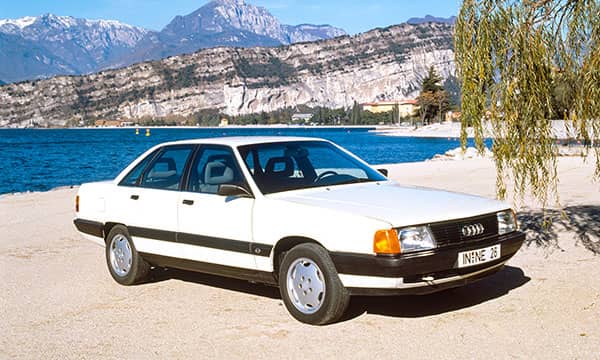The third generation of the Audi 100, which was unveiled in 1982, represented a milestone in European automotive construction. The drag coefficient of 0.30 is still impressive to the present day. It was achieved through technical fine-tuning with a flush-bonded windscreen and rear window, flush door windows and ingenious underbody panelling!
As part of what was known internally as the quality drive, the body of the Audi 100 was fully galvanized from autumn 1985. All of the petrol engines on offer were available from 1986 with a controlled three-way catalytic converter.
The Audi 100 deployed new technologies in construction, design and manufacturing and set new standards, not just for aerodynamics but also for active and passive safety and in overall body quality and production quality.

Technical data
| Engine | 5-cylinder in-line petrol engine | ||||||||
| Capacity | 2,226 cc | ||||||||
| Power | 101 kW / 136 hp at 5,700 rpm | ||||||||
| Dimensions |
|
||||||||
| Tare weight | 1,210 kg | ||||||||
| Top speed | 202 km/h | ||||||||
| Price | 32,560 DM | ||||||||
| Manufacture period | 1982 – 1990 | ||||||||
| Total number built | 959,250 (without Avant) |